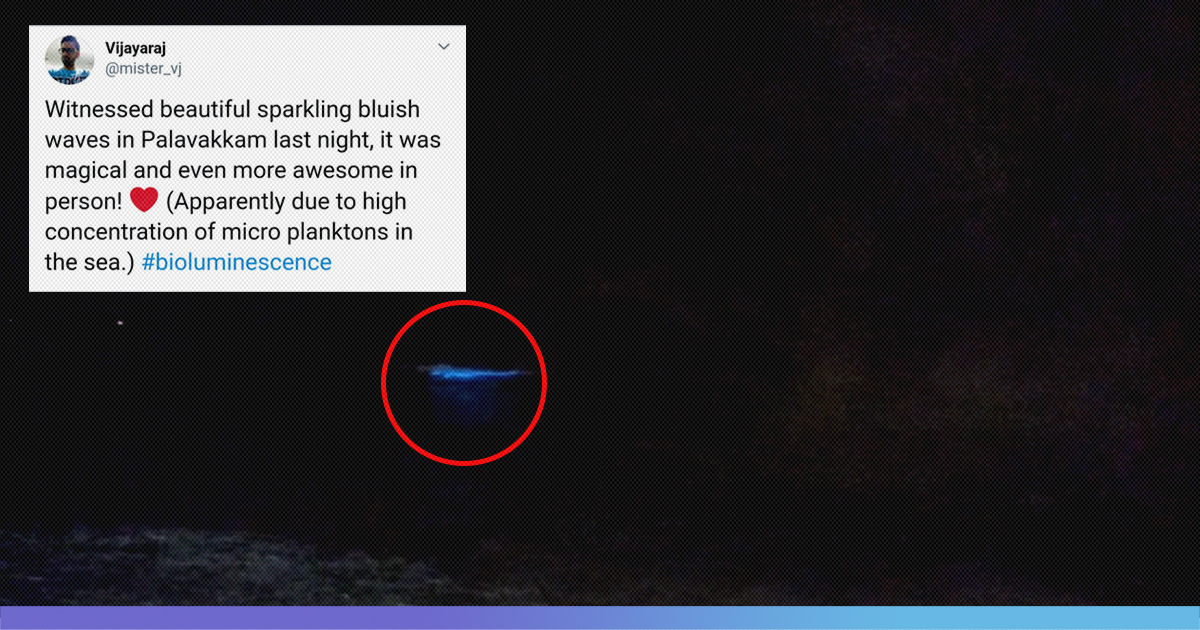
Stunning Blue Light Appears On Chennai Beach, Leaves Visitors Puzzled
21 Aug 2019 4:15 AM GMT
A magical blue glow on the beach along the East Coast Road in Chennai became a treat to the eyes for visitors on Sunday, August 18. The dazzling sparkles on the sea along the coast from Kovalam to Thiruvanmiyur took visitors by surprise. The internet soon became abuzz with videos and pictures of the stunning blue glow.
Witnessed beautiful sparkling bluish waves in Palavakkam last night, it was magical and even more awesome in person! ❤️ (Apparently due to high concentration of micro planktons in the sea.) #bioluminescence pic.twitter.com/O4GdNgIMBZ
— Vijayaraj (@mister_vj) August 19, 2019
What Is The Blue Glow?
This phenomenon is commonly known as sea tinkle. The blue glow is known as bioluminescence and is a phenomenon caused by Noctiluca Scintillans, according to marine experts. Noctiluca Scintillans are a type of phytoplankton that converts their chemical energy into light energy when it is washed ashore. A chemical reaction in the presence of oxygen involving an enzyme called “luciferase” produces the light.
Witnessing intense insane #bioluminescence at the Palavakkam beach at #chennai right now. this is beyond marvellous.
— katheeja (@TTheej) August 18, 2019
Bioluminescence is found in many marine organisms such as bacteria, algae, jellyfish, worms, crustaceans, sea stars, fish and sharks, and is similar to the sight of fireflies. Dazzling as it may appear to the eyes, it an indicator of climate change, and definitely not good news for marine life. According to experts, it might result in disrupting an eco system’s long-term health.
Bioluminescence in #Thiruvanmiyur beach ������ #chennai pic.twitter.com/MBkwtTdwn6
— Sundar G (@SunOfGan) August 18, 2019
According to Pooja Kumar, Activist & Researcher at the Coastal Resource Centre, due to the release of ammonia, these blooms have been linked to the massive fish kill. In some places, they have been said to be responsible for the decline in the fish count of the sea.
These blooms have also been linked to massive fish kill, due to the ammonia released. They have also been implicated in the decline of fisheries in some places! I’ll be ok the lookout for fishkill reported by Chennai’s fishers in the aftermath 3/n
— PK (@Poojixx) August 19, 2019
A sign of a possibly unhealthy ocean, bioluminescence usually blooms in areas where there is oxygen deficit. These areas also tend to have potentially high levels of nitrogen, phosphorus and others, which may adversely affect the larger marine food web.
Annually, since the early 2000s, such algal blooms have been reported in the Northern Arabian Sea. Goa, Mumbai and the backwaters of Kerala have also witnessed the phenomenon. Its function, however, is not fully understood. Studies are being carried to understand if it is a predator defence mechanism.
Also Read: The 25 Million-Year-Old Great Barrier Reef Is Not Dead Yet, But It Is At The Verge Of Dying
 All section
All section













